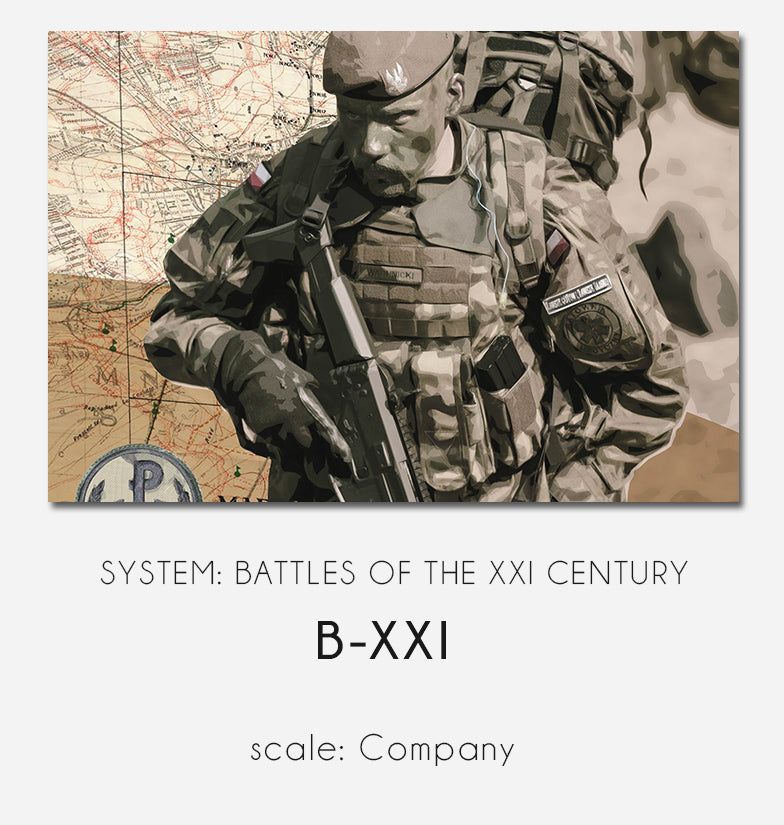
Battle of XXI'st Century (B-XXI)
Company scale system about modern battles, driven by the mechanics bit similar to the B-35 system. Highly detailed rules show the differences between the weapons of various armies, with armor or fire factors. Each brigade has its own units and tables, so players may check how the same unit would work with different kinds of equipment, from outdated to the most modern ones. Boards are smaller that usually, and each player usually controls no more than one brigades. With a devastating firepower or tanks, artillery and air units, battles are often short yet bloody. System cover both historical battles and the hypothetical, possible conflicts of the yesterday, today and tomorrow.
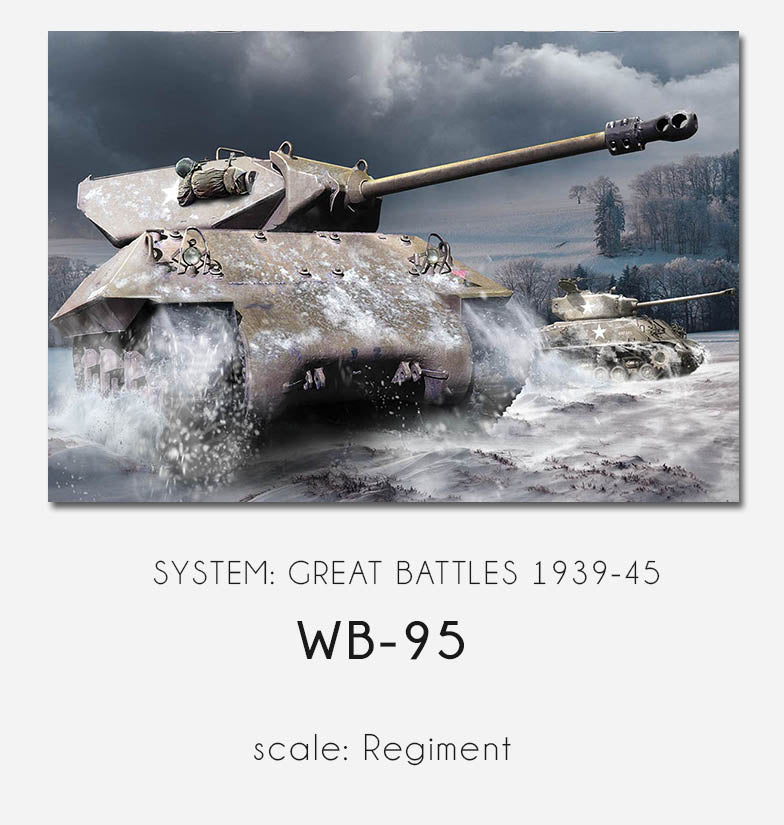
Great Battles 1939-45 (WB-95)
Regiment/division scale system, created for the biggest battles of the World War II. With fairly easy rules, players may attempt to change the course of the history in the most important battlefields of that conflict, like Stalingrad, Normandy, Kursk, Korsun or Moscow. The most important idea of this system is to give players a feel of the maneuverability of these battles and show the uneasiness of the decisions they have to make. They may use their armored forces to break through the enemy lines, use air forces to slow down enemy movement or use strategic movement to effectively exploit successes of the attacks. Along with historical scenarios, some games contain hypothetical scenarios as well, showing what might happened, if...
TUTORIAL on YouTube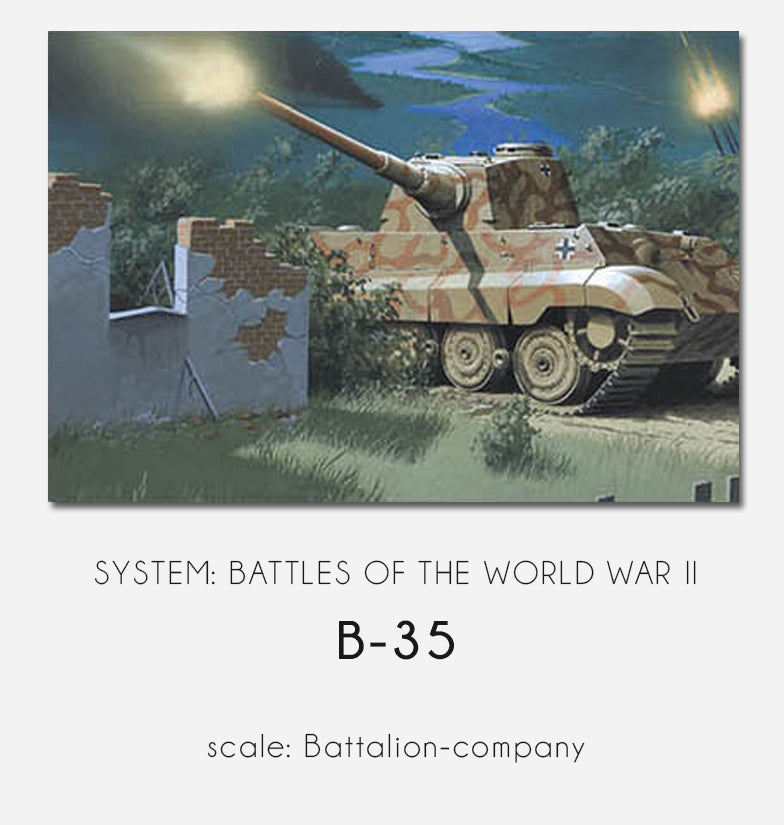
Battles of the World War II 1943-45 (B-35)
Highly detailed battalion scale system, created for the most important battles of the II World War. Rules are complex, but thanks to that players might really feel the difference between the weapons, guns and tanks of each side, along with division's structures, their weak and strong points. In these games you may feel the uncertainty and surprise of the air landings, desperation of the defense against mass attacks, difference between day and night combat, bravery of troops performing the sea landings or the strength of the small, yet deadly armed units. Each battalion may be key figure on the battlefield, a sometimes even a company may successfully stops enemy progress. Air and naval forces may support their units as well.
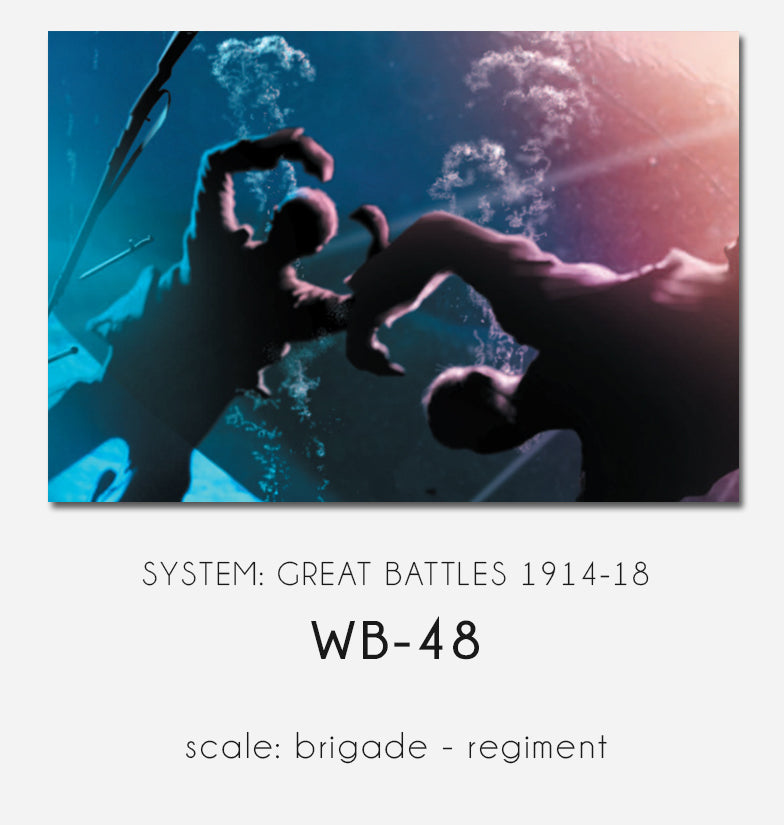
Great Battles 1914-18 (WB-48)
It is a combat system from the First World War. The basic scale of units are regiments and brigades. The regulations perfectly reflect the nature of the struggle on the battlefields of European theater.
The fights on the eastern front were characterized by great maneuverability, but the trench warfare is also reproduced. The advantage of artillery makes it possible to break new defensive positions. Meanwhile, on the Eastern Front, maneuvers with large masses of infantry supported by cavalry prevailed. the key to driving is to have supplies without which it quickly turns out that you lose control of your own troops. That is why planning plays such an important role in this system.
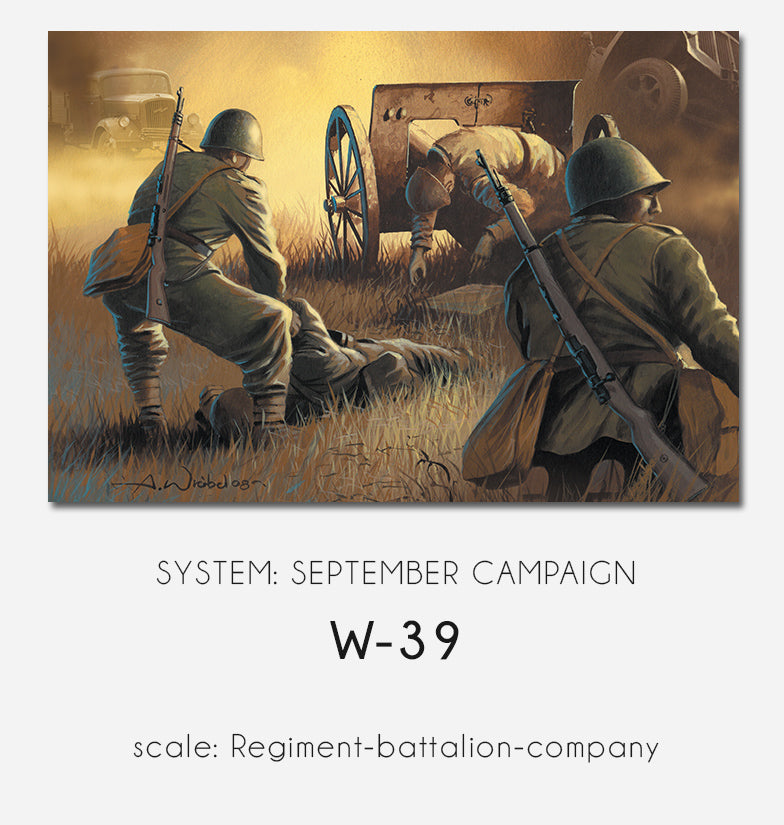
Polish September Campaign 1939 (W-39)
September 1939 (W-39) – regiment/battalion scale system created for the battles of the Polish campaign 1939. Each game recreates one of the key battles of this campaign, since the first days of the border fights, through the German breakthrough, Polish counter-offensive at Bzura, last attempts of defense and the final battle of Kock. Players may control Polish, German, Soviet, Slovakian and Lithuanian units. Rules are depicting all the situations that were important to the campaign, along the massive impact of the armored units, desperate defense, air superiority, problems with supply and attempts to reinforce units that suffered loses. Boards can be linked with each other, so some games can be played together, if players like to.
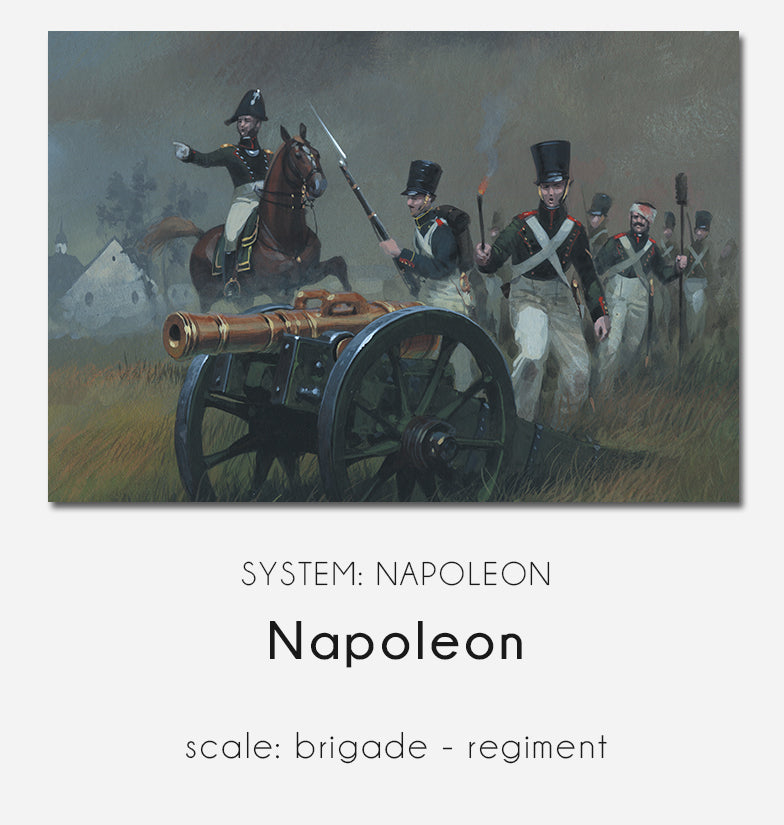
Napoleon
Napoleon – brigade/regiment scale system, created for the battles of the first half of the XIX century, initially for the Napoleonic era, but not only. Rules are fairly easy, so players may learn them quite fast. System covers huge battles, like Borodino 1812, big ones like Grochów 1831 and smaller ones, like Ostrołęka 1807. Rules depict all important pieces of the XIX-century battlefield, like cavalry charges, artillery fire, infantry hand to hand and fire combat, squares, demoralization levels and commanders range of effective leadership. Brigade scale allows to recreate even a big battles in players-friendly size, but still historically accurate.
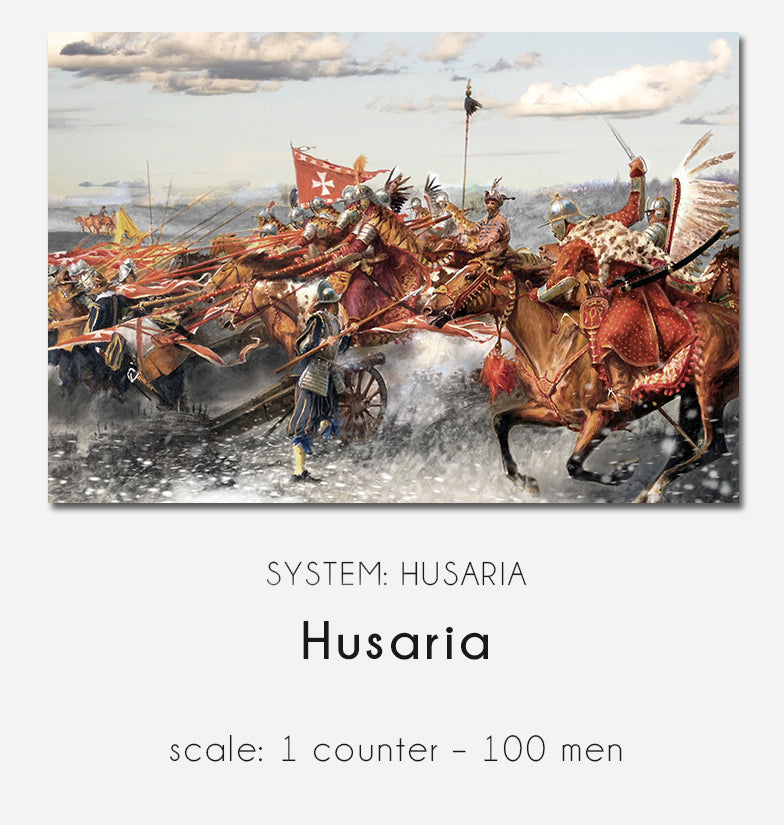
Husaria
A system created for the major battles of the XVII century, fought at the central and eastern Europe between the armies of the Polish-Lithuanian Commonwealth and it's enemies – Ottomans, Swedes, Russians or Cossacks. In the most of these battles Polish legendary heavy cavalry called Winged Hussars paid key role, breaking the lines of the enemy and defeating the best armies of the Europe. Rules are quite simple, yet still accurate, catching many important elements of the XVII century warfare, like firepower, ability to change the formation in the presence of the enemy, speed, maneuverability and immunity to the loses.
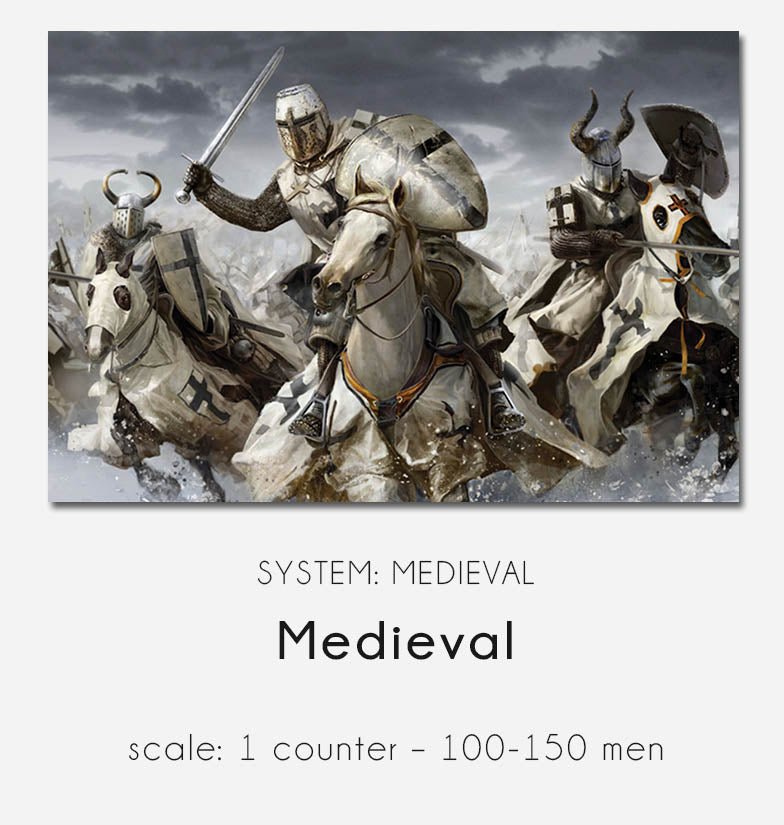
Medieval
System created for a biggest battles of the medieval age, since the dark ages till the birth of the gunpowder era. Games are covering many the important clashes of these times, since the Wilhelm's conquest of England at 1066 till the biggest battle of medieval age – Grunwald 1410. Each counter represents about 100-200 men of infantry, cavalry, archers, crossbowmen or even artillery. Rules depicts the differences between armors and charge's impact, along with some other factors, important at the medieval battlefields, like leadership, morale, banners, pikes or traps. A lot of battles are cavalry focused (Varna 1444, Grunwald 1410, Legnica 1241), but there are some infantry-mostly as well (Fullford 1066) and infantry versus cavalry (Stirling 1297, Bannockburn 1314). Rules are rather easy and quick to learn. Some of the games contain more than just single battle.
Game systems
- System: Battle of XXI Century (B-XXI) – Scale: company
- System: Great Battles 1939-45 (WB-95) – Scale: regiment - division
- System: Battles of the World War II 1943-45 (B-35) – Scale: battalion - company
- System: Great Battles 1914-18 (WB-48) – Scale: regiment - division
- System: Polish September Campaign 1939 (W-39) – Scale: regiment - battalion
- System: Campaigns of World War II (K-2) – Scale: division - brigade
- System: Campaigns of World War I (K-1) – Scale: division - brigade
- System: Napoleon – Scale: brigade - regiment
- System: Medieval – Scale: 1 counter= 100-200 people
- System: Husaria – Scale: 1 counter= ok. 100 people
